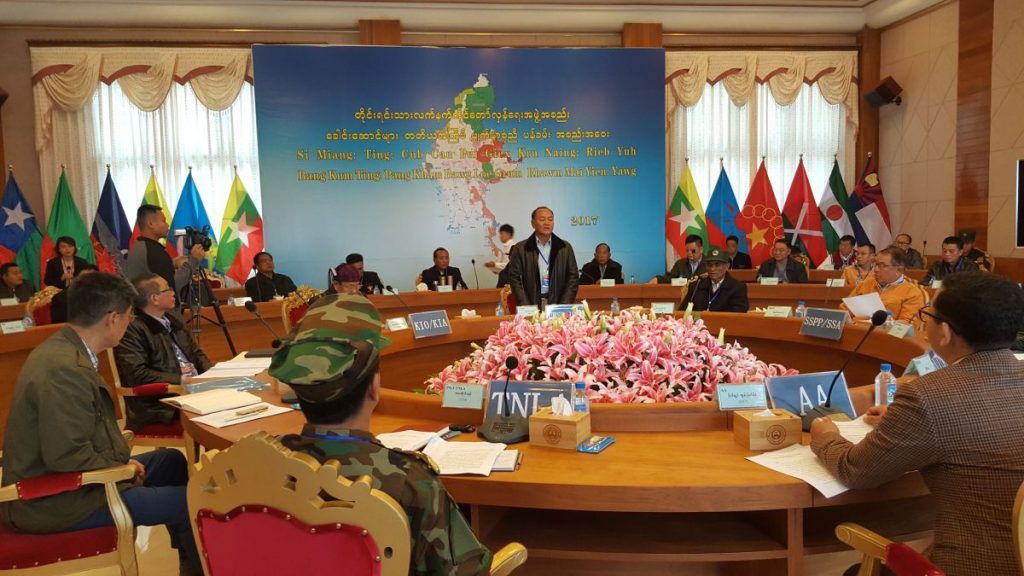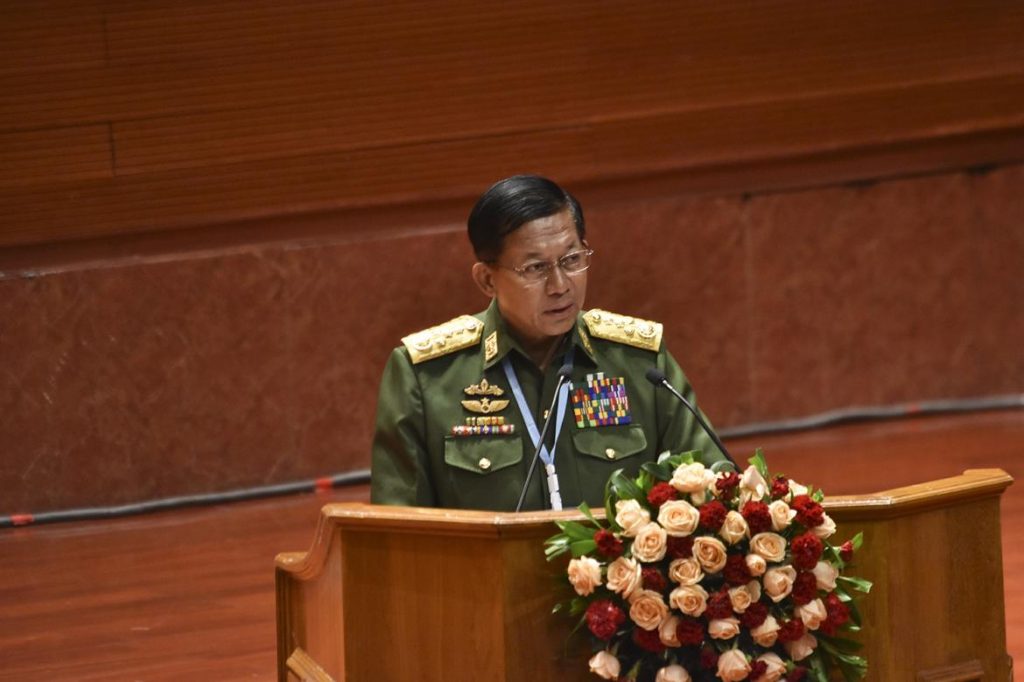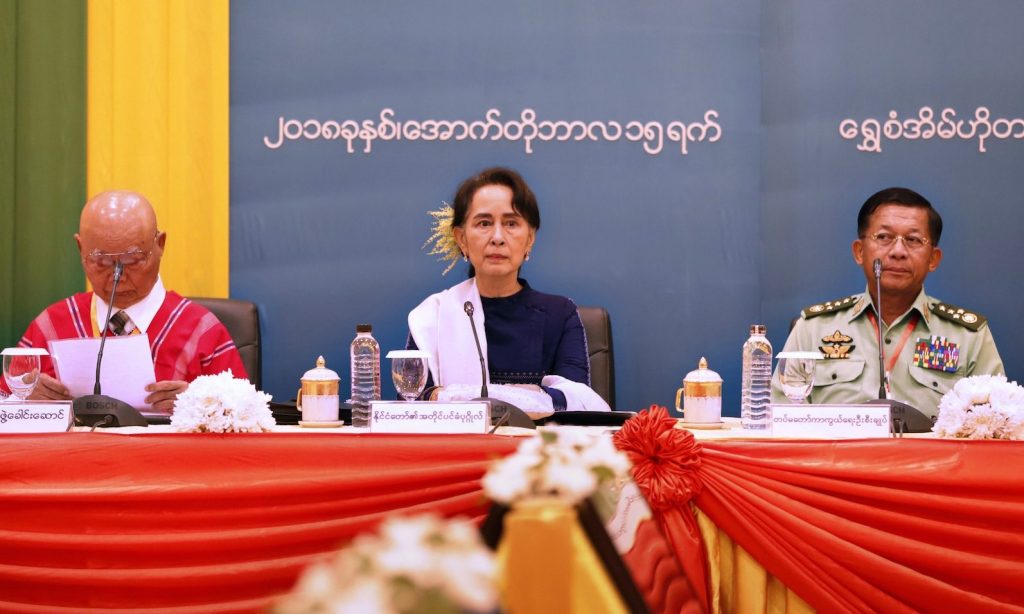A recent political talk-show on Radio Free Asia (RFA) on the topic of China’s political influence in Myanmar mentioned the Arakan Army’s (AA) endorsement of China’s One Belt One Road (OBOR) or Belt and Road Initiative (BRI). It was taken as a remarkable testimony of bowing to a regional power.

In fact, it is not only the AA that is kowtowing to China but also the seven-member Federal Political and Negotiation Consultative Committee (FPNCC) has also been staunchly behind it. The FPNCC is made up of United Wa State Army (UWSA), National Democratic Alliance Army (NDAA), Shan State Progressive Party (SSPP), Kachin Independence Army (KIA), Ta’ang National Liberation Army (TNLA), Myanmar National Democratic Alliance Army (MNDAA) and AA.
Generally, China employs a government-to-government and party-to-party two-pronged relationship with Myanmar as it usually does with the other countries. But lately, with the ambitious BRI mega project, it seems to have added another channel which is military to military.
The FPNCC relies heavily on China for arms, munitions, uniforms, food supplies, and also two-way trade which involves exporting natural resources and mineral extraction, among others, from the EAOs’ side and importing needed consumer goods from China.
One outstanding example of Chinese influence was China’s pressure on the Tatmadaw, which is bitterly against some FPNCC members, to invite the FPNCC to the second (May 2017) and third (July 2018) 21st Century Panglong – Union Peace Conferences (21PC-UPC). The FPNCC was also not too keen to attend the conference as it has its own approach to handle the peace process.

But nevertheless, the FPNCC attended the opening ceremony of the second and third 21PC-UPC, although it was only there at the opening ceremony and returned a day or two later without being able to present its political position at the conference in an official manner.
The Union Solidarity and Development Party-led Thein Sein government in 2011, having established a hybrid civil-military regime, tried to reduce its dependence on China by opening up its door to the West.
Thein Sein’s truce with the National League for Democracy (NLD) leader Aung San Suu Kyi paved the way for its party registration, entered by-elections in 2012 and won 43 out of the 45 contested seats; and Thein Sein’s suspension of China’s Myitsone dam project; subsequently led to lifting of the various sanctions by international players on Myanmar.
This, however, was short-lived as the West condemned and abandoned Myanmar over the Rohingya crisis that occurred in 2017, which in effect pushed back Myanmar into the orbit of China again. Consequently, China shielded the NLD government and the military in the United Nations Security Council (UNSC) on whittling down a Security Council statement and other actions related to the issue.
Economically, the Myanmar government recently agreed to begin work on key projects under the China-Myanmar Economic Corridor (CMEC) agreement which is part of the BRI. An estimated $2 billion will be spent in the initial stages of the project which is expected to be made up of 24 projects in total.
Among the 24 proposed CMEC projects, Myanmar has agreed to speed up the process of nine major projects, which include the Kyaukphyu SEZ in the west, the New Yangon City Development in Yangon and the border economic cooperation zones in Kachin and Shan states.
Myanmar’s foreign exchange reserves totalled $6.35 billion in 2018, while the total national debt was estimated at around $10 billion. Of that, $4 billion is reportedly owed to China, according to noted Myanmar observer Bertil Lintner.

Chinese diplomats visiting Myanmar make it a tradition of seeing the commander-in-chief Min Aung Hlaing and his top brass, including regular invitations to China, where military facilities, arms factories and peace-keeping training centre for international mission under UN flag were shown, according to Ms Hla Kyaw Zaw, a China-Myanmar relationship experts in a recent RFA talk-show. In short, the relationship of military-to-military has been firmly established.
Besides, China is the biggest supplier of military hardware to Myanmar, accounting for 61 per cent of weapons imported by Myanmar between 2014 and 2018.
As all can see, China is important for all stakeholders one way or the other.

The FPNCC which is not part of the NCA-based peace process has 80% of the estimated total EAOs 80,000 troopers countrywide. While it may be inclined to have its own political agenda, it is in no way in a position to go against the pressure of China, as proven by its attendance at the second and third 21CP-UPC. The alliance depends on China for arms and maintaining its economy.
The government, chastised by the West has no way out but to depend on China for protection against the onslaught in the UNSC and also economic survival, as in the days of the successive military governments.
Likewise, the military has to tread the same path as the government to realize its “standard army” ambition, as the West has boycotted it. The United States even recently doled out visa sanctions on the commander-in-chief and its three top generals. It might shop around in Russia and India for arms, but China will remain the main source of support for sometimes to come.
Thus, there is no denial of the growing political influence in Myanmar and it needs to live with it, while trying to navigate the political waters as best as it possibly can and avoid the so-called debt trap, which is closely link to the BRI.



